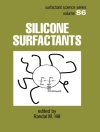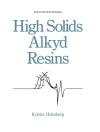Sustainable development is now accepted as a necessary goal for
achieving societal, economic and environmental objectives. Within
this chemistry has a vital role to play.
The chemical industry is successful but traditionally success
has come at a heavy cost to the environment. The challenge for
chemists and others is to develop new products, processes and
services that achieve societal, economic and environmental
benefits.
This requires an approach that reduces the materials and energy
intensity of chemical processes and products; minimises the
dispersion of harmful chemicals in the environment; maximises the
use of renewable resources and extends the durability and
recyclability of products in a way that increases industrial
competitiveness as well as improve its tarnished image.
İçerik tablosu
1 Introduction.
2 Incentives for Using Green Chemistry and the Presentation of
An Approach for Green Chemical Design.
3 Green Product Design.
4 Application of Green Metrics Analysis to Chemical Reactions
and Synthesis Plans.
5 Mass balances and life cycle assessment.
6 Process metrics.
7 Application of life cycle assessment in process
development.
8 Tools and Strategies for Greening Chemical Inventories in
Small Businesses
Yazar hakkında
James Clark is Professor of Chemistry and Director of the
Green Chemistry Network and former industrialist.
Duncan Macquarrie is now a Royal Society University
Research Fellow at the University of York.












